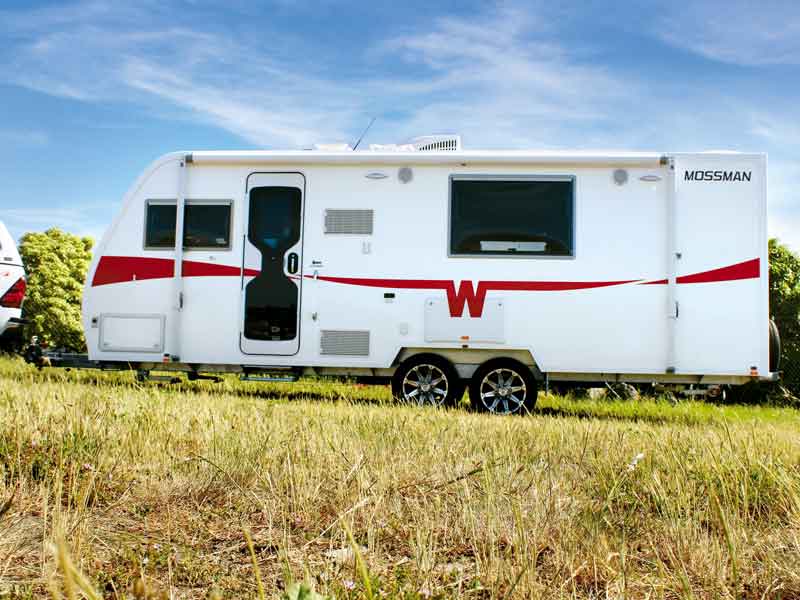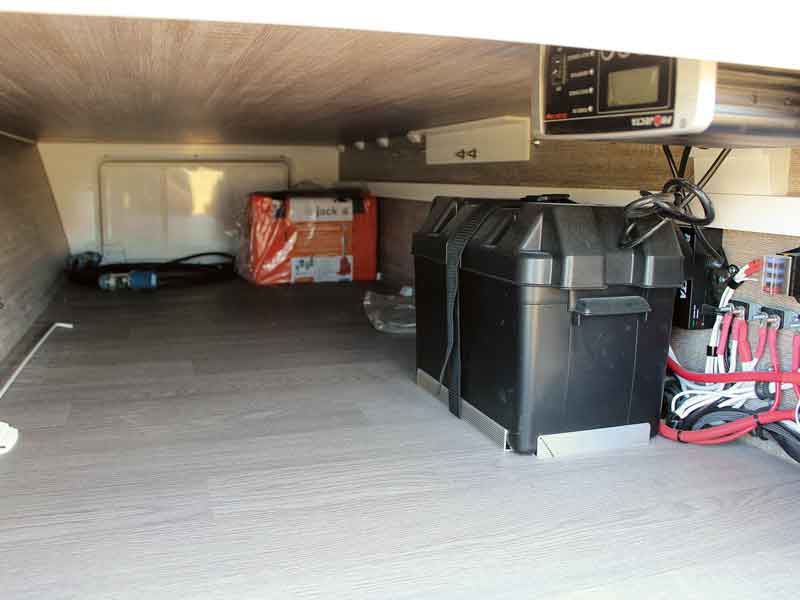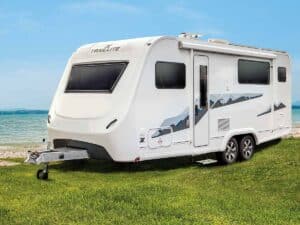Chris Hodson, fleet sales executive for Apollo, is a big fan of all things Australian. Well okay, maybe not everything to do with the Left Island, but he’s a fervent fan of Winnebago’s caravan line-up.
Wait a minute, I can imagine some of you thinking to yourselves, ‘there seems to be two things wrong with that statement.’ And one of them isn’t even to do with praising Australians.
You’re kind of right, though. Winnebago is synonymous around the world for two vital things: being American and making campervans. Australian-built caravans with the Winnebago brand emblazoned on them? What madness is this?
However, it’s not mad. Apollo has been manufacturing Winnebago campers and caravans under licence from the Forest City, Iowa-headquartered company for many years now. As far as the motorhomes side of the business goes, it’s a sure bet, what with Winnebago probably being the world’s single most recognisable motorhome nameplate.
Caravans are a newer advent though, and mixing that trusted brand name with some top quality Aussie build practices looks like it will pay dividends.
Keeping it New Zealand

The Winnebago manufacturing plant in Brisbane is a state-of-the-art facility where all Kiwi-destined Winnebagos take shape. However, it’s still early days for the caravan side of the business. In fact, Chris showed me the first couple of models that have arrived at the company’s Christchurch depot.
“The marketing push for Winnebago in New Zealand starts right now, but we are really excited about the product. The build quality is so good, we think we’ve got a hea d start already,” he says.
“In a way, buying an Australian-built caravan is like buying local. I was at the [New Zealand Motorhome, Caravan and Leisure] Show in Hamilton in September and, honestly, the choice of European brand motorhomes and caravans all of a sudden is just utterly bamboozling.
“There are some wonderful options within that part of the market; some really impressively-built machines. But I find there are often a lot of compromises to be made, too. With Winnebago manufacturing motorhomes and caravans specifically for our part of the world, they feel more suited to our lifestyle and—especially—our roads.”
Burke and Mossman fit for a purpose

The two models of Winnebago currently available to Kiwi holidaymakers are the Burke and Mossman (pictured) grade caravans. I’ll cover some of the latter’s highlights in a second, but an important through-line for both models is their rugged chassis and body structures.
You’re not doing it properly in the Aussie market without a robust, high-riding underframe, and the obvious benefits of this design is that caravanners can get into some pretty scenic and hard-to-find spots on this side of the Tasman without worrying about dragging their new pride and joy across a serrated goat track to get there.
All Winnebago caravans feature a hot-dipped galvanised steel chassis, dual AL-KO Independent Rubber Suspension (IRS) axles, electric drum brakes, and a six-inch RHS drawbar with six-inch RHS chassis rails.
The spare tyre is easily accessible at the rear, mounted nice and high to a steel bumper. AL-KO stabilisers are a feature at each corner and the gravel guard up front, protecting twin 9kg gas bottle mounts, is standard.
Winnebago builds its caravan living quarters to a similarly robust template, with gel-coated exterior and interior walls manufactured from single-piece structural composite panels and foam core insulation used throughout. All windows are double glazed acrylic, with built-in flyscreens (they’re made in Aussie, don’t forget).
Big space for two or three

The Winnebago Mossman B is designed to offer up a heap of floor space for two or three inhabitants. The extra space comes courtesy of a slide-out, in which the east-west queen bed nestles.
There’s an extra bed that can be fashioned from the converted U-shaped sofa arrangement at the front of the caravan. It’s advertised as a third berth, although it’s nice and wide (I’d suggest it’s a king-single), and you could probably top-and-tail a couple of kids/grandkids there… well, until the second night squabbling starts anyway.

By utilising a 22-foot-long (6.8 metres) body shell to house just a couple of occupants, the Mossman B boasts acres of space. There’s also an impressive amount of storage on offer, with overhead cubbies at all points on the compass. Spare squabs for the sofa-to-bed conversion are housed behind the sofa in handy (and large) storage bins.
The rear-sited bathroom is equally spacious. It offers enough room for a separate shower, another cupboard for linen (to supplement the two other wardrobes and pantry found back in the sleeping/living area), and even a purpose-designed 2.5kg washing machine hidden away under a cover alongside the vanity.

Outside, additional features such as a sizeable underfloor storage locker up front, barbeque gas bayonet, rollout awning, and external shower connection at the rear all help make this Winnebago tow-behind seem as well-kitted-out as one of their motorhomes.
The choice is yours
Chris Hodson says that as the Mossman and its slightly smaller sibling, the Burke, are the first Winnebago units in the country, it’s early days for the brand’s caravan efforts here.
He’s not willing to pinpoint a specific configuration that will prove a top-seller yet, but he’s confident the mix of space and quality craftsmanship will certainly strike a chord with more intrepid caravanners. Chris says that factory support is excellent and, currently, customers will probably be facing a 12- to 18-week wait time on their chosen caravan.
“We’re a big company with a lot of experience and a recognised brand name, so customers can feel assured we’re not going to disappear anytime soon.”
With importers of European caravans and motorhomes needing to book production line space 12 months ahead in some cases, he says the ability for customers to approach Winnebago models with more flexibility in what they’re after is another key benefit.
“I always encourage customers to broaden their focus. Don’t be so dead-set on a specific configuration because in practice some things work as you might expect, but other things won’t. There is an amazing array of options available for these caravans, so the ‘must-haves’ and the ‘nice to haves’ can often be incorporated into the same model,” he says.
Verdict

“Like Australia, New Zealand is a great testing ground for caravans of this type,” Chris says.
“We build robust products for the rental market, so we know what holds together, and we know what reliability looks like. Winnebagos fit the bill and we can’t wait to get stuck in.”
On first inspection, it looks to me that Apollo’s confidence is well-founded. The first Winnebago models on offer to Kiwi caravanners certainly tick plenty of boxes. It seems there’s something praiseworthy coming out of Australia after all.
Winnebago Mossman B Specifications
Vehicle make/model: Winnebago Mossman B
Berths: 3
Axles: 2
Approx. overall length: 6815mm
Approx. overall height: 3035mm
Tanks: 164L fresh 82L grey
Gas: 2 x 9kg
GVM: 2215kg
Price (as reviewed): $87,400

Pluses
- Solid build quality
- Huge amounts of storage
- Motorhome level of standard specification
Minuses
- Big caravan will be intimidating to tow for some
- If you have more than one child/grandchild, look away now












